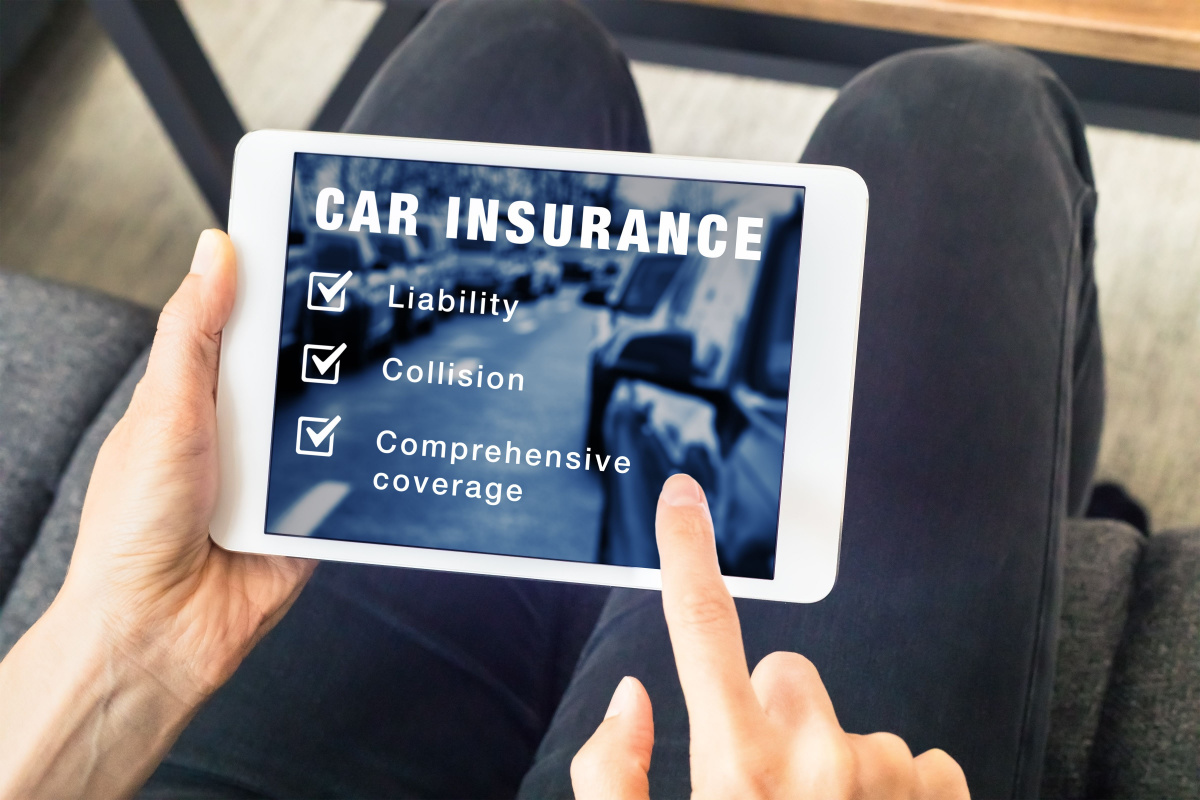10 Ways to Save On Car Insurance
Ever wondered how to crack the code of car insurance rates? You're not alone. The auto insurance game can seem mysterious, with premiums swinging widely from one provider to another. But fear not; we're here to illuminate the path to savings.
In this guide, we're not just scratching the surface; we're uncovering practical, lesser-known strategies that could significantly lower your car insurance premiums.
So, if you're ready to put more money back in your pocket, buckle up. We're about to embark on a journey into the smart, money-saving side of car insurance.
Explore Your Options: Shop Around and Compare
Saving big begins with knowing your options. Like a treasure hunter seeking the most valuable gem, you should scour the market for the best rates. You’ll be surprised at how much rates can vary between companies for the exact same coverage.
The reason? Every insurance company uses a different formula to assess risk and calculate premiums. This formula contains various factors ranging from your driving record, age, car type, location, credit score, and even your gender and marital status.
One approach to tap into the potential savings is to get quotes individually from each insurance company's website. But this can be time-consuming. Instead, a more efficient way to compare car insurance quotes is to use a platform, like TrySmartly, that allows you to complete one form and receive multiple quotes. This way, you can see a range of offers all at once, saving time while getting a broader view of the market.

But remember, it's not just about the price. When comparing car insurance, pay close attention to coverage types – does the policy offer comprehensive, collision coverage, or just the bare minimum required by law? Also, consider out-of-pocket costs like deductibles – a lower premium might come with a higher deductible, meaning you'd have to pay more before your insurance kicks in.
Finally, reviews and ratings on trusted online platforms such as the Better Business Bureau can give you an idea of the company's customer service and claims process.
Ultimately, a well-rounded decision will consider not just the cost but also the extent of coverage and quality of service. This is how you can find the best value for your money.
Don’t Leave Money on the Table: Ask for Discounts
Did you know that insurance companies often have an array of discounts that can result in significant savings? Below are some common discount options:
- Safe Driver Discount: If you maintain a clean driving record, indicated by being accident-free, ticket-free, and free of major violations, you could earn a safe driver discount, potentially reducing your premium by 10% to 20%.
- Good Student Discount: High school or college students on your policy who maintain a B average could qualify for a good student discount, which can cut 15% to 25% off the portion of your premium allocated to the young driver.
- Defensive Driving Course Discount: Completing a defensive driving course could make you eligible for a discount of about 10% in some states.
- Safety Features Discount: Your car's safety features, such as anti-lock brakes, airbags, or a modern alarm system, could also offer a discount.
- Accident-Free Discount: Some insurers offer discounts to drivers who have not had any accidents or moving violations for a certain period.
- Low-Mileage Discount: You might qualify for a low-mileage discount if you don't drive a lot. Typically, this applies if you drive less than 7,500 to 12,000 miles a year, but the specific mileage criteria can vary between insurance companies, so it's wise to confirm their requirements.
Remember, every bit of savings adds up and can help you save on car insurance. However, not every insurance provider offers all the above discount options. This variation should be another factor to consider during your research. Therefore, don't hesitate to ask your insurance agent about their discounts and which ones you may qualify for.
Only Pay for What You Need: Drop Car Coverage You Don’t Need
Selecting the right car insurance coverage is much like choosing the perfect road trip playlist – it's unique to you and requires careful consideration. Most states mandate at least minimum coverage, which includes bodily and property damage.
Going with minimum coverage might save you money upfront, but it could end up costing you more down the road if you encounter more significant damage.
Comprehensive or full coverage is optional and may cost you a bit more, but it's there for you when the unexpected happens, from a fender bender to a tree branch landing on your car. But let's be clear – no coverage is a one-size-fits-all ticket.

So, what should you consider when choosing your coverage? Start by examining your personal circumstances. How much can you afford in case of an accident? Do you have a new or expensive car to protect? Also, consider your comfort level. Are you okay with taking a risk with minimum coverage, or do you prefer the security blanket of full coverage auto insurance?
Understanding the types of car insurance coverage can help you make informed decisions.
Here's a brief rundown:
- Liability Insurance (State Minimum): This coverage pays for the other party's medical bills and property damage if you're at fault in an accident. Most states require at least this minimum level of coverage. It's an affordable option, but it doesn't cover your own bodily injury or property damage. This means you'll have to pay out of pocket if you cause an accident that results in expenses beyond your coverage limit, as well as for your own medical bills and car repairs.
- Comprehensive Coverage: This option covers non-collision incidents like theft, vandalism, or damage from weather events. Living in a high-crime area or a region with severe weather is beneficial. However, for an older car, the cost of comprehensive insurance might outweigh its benefits.
- Collision Coverage: This coverage pays for damage to your car in an accident, regardless of who's at fault. It's ideal if you have a newer car or can't afford to replace it without insurance
- Underinsured/Uninsured Motorist Coverage: This protects you if you're in an accident with a driver without insurance or adequate coverage. This can be a wise precaution considering that some drivers opt for the bare minimum state coverage.
Smarter Choices, Lower Premiums: Choose an Insurance-Friendly Vehicle
Your vehicle can be your secret weapon in saving money on car insurance. Some models, like the safety-oriented Subaru Legacy or Mazda CX-5, come with lower insurance costs. In contrast, high-performance or luxury cars like a BMW M3 or Chevrolet Camaro can attract premiums up to 50% to 100% higher.
These escalated costs are often due to their expensive parts, high-end features, professional maintenance requirements, and appeal to car thieves.
So, next time you’re in the market for a new ride, consider how its make and model could affect your premiums. Opting for an insurance-friendly vehicle could halve your annual car insurance costs, making it a strategic move in your quest to save on car insurance.
Bundle Your Insurance Policies and Reap the Rewards
Here’s a hot tip – bundling multiple insurance policies with the same provider can unlock considerable discounts. For instance, customers bundling auto and homeowners’ insurance can save an average of 16%. Similarly, insuring multiple vehicles under a single multi-car policy can lead to further discounts, often up to 25%.
By bundling, you simplify your insurance management and make considerable savings on your premiums. Do remember to compare individual and bundled quotes to ensure the best deal.
Increase Your Deductibles for Lower Premiums
Increasing your deductible – the sum you pay out of pocket before insurance kicks in – can be a strategic move to lower your premium. For instance, upping your deductible from $200 to $500 could reduce your collision and comprehensive coverage cost by 15% to 30%. Going further and raising it to $1,000 could save you up to 40%.
However, one must understand the financial implications of a higher deductible. In the event of an accident, you'll be responsible for paying this deductible out of pocket before your insurance company covers the remaining costs.
For example, with a $1,000 deductible, you would first need to pay $1,000 of the repair or replacement costs. If the damages exceed the deductible, the insurance company will step in to cover the rest of the damages after you have paid your deductible.
Therefore, ensure you can comfortably afford the higher deductible in case of an accident or claim. Always carefully consider your financial situation and potential out-of-pocket costs before deciding on a higher deductible.
Build Your Financial Reputation: Maintain a Good Credit Score
Your credit score can be an unexpected ally in your quest to save money on car insurance. A strong credit score signals to insurers that you’re less of a risk, often leading to lower rates.
For example, a driver with an excellent credit score might pay an average of $1,500 annually for auto insurance. In contrast, a driver with a poor credit score could see their premiums double, or even triple, to an average of $3,000 to $4,500 per year.

So, maintain a strong credit score by paying bills on time, limiting unnecessary credit, and keeping credit balances low. In doing so, you could save up to 50% to 70% on your car insurance simply by demonstrating financial responsibility.
Of course, note that these figures can vary greatly depending on your location, type of vehicle, driving history, and other factors.
Drive Less, Save More: Consider Per-Mileage Insurance
Low-mileage driver? There’s a cost-saving strategy just for you. Per-mileage insurance calculates your premium based on the miles you clock, making it a perfect fit for those who drive less. It’s an excellent option for people who work from home, use public transportation frequently, or otherwise don’t use their car very often.
For instance, if your annual mileage is 5,000 and your rate is six cents per mile, you’d pay $300 a year compared to traditional policy costs, which can range from $600 to $1,200 or more. This option could save you hundreds annually, making it worth considering if you drive infrequently.
Harness the Power of Association: Check for Group Discount
Are you a member of an organization or a particular profession? You might be sitting on potential discounts. Insurers often offer discounts to military personnel, teachers, engineers, or government employees. It’s worth asking about group discounts when shopping around for car insurance.
For example, Geico offers up to a 15% discount for military personnel and federal employees and up to an 8% discount for members of certain professional groups or associations.
Safety Pays: Drive Safely
Let’s end where it all begins – with safe driving, which is key to how to get low car insurance rates. The safer you drive, the less you pay. Insurers often reward drivers with clean records with discounts or bonuses over time.

For instance, many insurance companies offer a ‘no-claims’ discount, which can reduce your premium by up to 20% to 25% if you remain accident-free for several years.
Some companies even offer a ‘safe driver’ bonus, where you could earn back part of your premium or a credit toward future payments for remaining accident-free over a specified period.
For example, a driver with a $1,500 annual premium could save up to $375 annually with a 25% no-claims discount. Plus, safe driving practices can be your ticket to maintaining low auto insurance rates, with savings that add up significantly over the years.
Bottom Line
Exploring ways to lower car insurance can seem like scaling a mountain at first, but once you break it down into steps, it’s more like a leisurely stroll in the park. These strategies are the keys to unlocking potential savings.
Whether you’re a newbie on the road searching for the best insurance for new drivers or an experienced motorist wanting to trim expenses, these tips will help you reduce car insurance costs without compromising on coverage.
Sources
- Better Business Bureau. “Company Reviews and Ratings.” Accessed Aug. 8, 2023.
- RoSPA (The Royal Society for the Prevention of Accidents). “What is defensive driving? Your questions answered about defensive driving.” Accessed Aug. 8, 2023.
- Yahoo Finance. “Multi-car insurance policies.” Accessed Aug. 8, 2023.
- Yahoo Finance. “Economic News and Analysis.” Accessed Aug. 8, 2023.
- The Balance. “Why Criminal Convictions Increase Car Insurance Costs.” Accessed Aug. 8, 2023.
- Market Watch. “How Car Insurance Varies Depending on Your Climate.” Accessed Aug. 8, 2023.
- NerdWallet. “Minimum Car Insurance Requirements by State.” Accessed Aug. 8, 2023.



